That evening, all the male cruisers were invited by some locals to a lobster hunting expedition on the reef which sounded quite treacherous and yielded 2 lobsters before it finally had to be abandoned due to foot-injury. Some might say this was Bad Fairy Payback for not inviting the female visitors! This society is patriarchal in its traditions; women are said to bring bad luck to a fishing trip - something that Rita and I have luckily had the opportunity to disprove during our stay.
So, another day, another trip. This time the health officer, Joseph or 'OJ' to his friends, and two younger men gave up most of their day to take 4 of us (Kika and Noa) to the north of the lagoon to fish and teach us how to look for pearls and clams and to husk coconuts.The concept of time here is fairly relaxed (not a problem as it's not like we've got trains to catch) so after some delay and the usual preamble which seems obligatory before embarking on any activity here, we set off. The clams are large and abundant, and easily found in the shallow waters of the lagoon. They are on average about 8" long and the fleshy lips are beautiful iridescent colours. The nugget of muscle is tasty and a pleasant texture, and can form the basis of a good curry as Noa proved later in the week. We also opened and ate oysters straight out the shell - normal Pacific and pearl oysters or 'pee-pees'.Various methods were used to catch parrot fish, squirrel fish, milk fish and trevally which we then barbequed on a deserted motu and garnished with grated coconut. I spent time in the shallows just looking at the life on the sea-bed. You think it's all sand and rock but if you make yourself immobile and just float on the surface the place comes alive. You see shells move as the hermit crabs begin to lumber about, families of little fish poke their heads out from behind coral florets, shrimps resume endless excavations, and all the time, the black tip sharks patrol.I saw an amazing sight which I found incredible when I first read about it months ago and was amazed to witness here in Penrhyn. A small (about 2") white goby sits by a hole in the seabed. Periodically, a grey shrimp, (about 1.5") appears from the hole with its 'shovel' of pincers full of sand. The goby feeds on creatures that the shrimp disturbs with its excavations and, in return, the virtually blind shrimp relies on the goby to be its sentinel. On emerging with its load, the busy shrimp touches the goby with its antennae for reassurance. If the goby senses danger, it flicks the shrimp with its tail and both retreat hastily into the hole. How about that for a bit of mutual back-scratching! I think it's called a 'mutual symbiotic relationship', ie: both parties benefit. I actually saw this happen in 5 or 6 different places. At one point I was so engrossed that I didn't notice a blacktip almost brush past my left arm until it was there in front of me. A 'mutually impervious relationship' - at least that's what he thought (I hid my shock pretty well!)
These trips are totally dependent on the kindness and generosity of the locals who happily give up their time to show you their atoll. There is also, it must be said, a rivalry between senior members of the village to befriend cruisers. We have puzzled over the reasons for this which, as there is no material benefit to befriending us, must simply be status. This competition fuels their enthusiasm and willingness to give of their time and resources. It's important, we have quickly come to realise, not to abuse their generosity and to try to diffuse any competition by giving some time to all parties - not always easy and sometimes a little awkward. That the town is so small only exacerbates the problem. Everyone seems to know the other's business down to how many cans of beer you have bought from the town on 'The Other Side'. Omoka is a short trip across the lagoon, but the rivalry between there and Tetautua is fierce. When we arrived, though the officials who checked us in were pleasant and helpful, they implied that over on 'The Other Side' we had to beware as the people were prone to theft and other vices which is, happily, complete fiction. It reminds me of the perpetual rivalry between Grimsby and Hull which sit on opposing sides of the river Humber (the south side's the best!) This is paradise with a twist: stay for a couple of days and you see paradise, stay for a couple more and you see the twist. It seems that life in a small town has its drawbacks, whether your view is the Pacific or Pontefract. The population of the town is much depleted - there are only about 60 inhabitants these days. Jobs and adventure in Australia and New Zealand often prove difficult to resist, and as a result there are constant, valiant efforts being made to continue the dwindling traditions and culture. The language is Maori but it is a dialect which is unique to Penrhyn and is spoken throughout although English is also spoken and, of course, this has enabled greater contact between us and the locals. A group of villagers of all ages are involved in taking a tour of New Zealand and Australia where they will perform dancing, singing and traditional music in order to raise money for a new tractor. We were lucky enough to be invited to a rehearsal in the Sunday school one evening. Those performers with small children brought them along and either put them on a mat on the floor to one side where they fell asleep, or else they simply slept in their parent's arms while they belted out the songs. The singing was wonderful and accompanied by some accomplished ukulele playing. The dances were similar to other Polynesian arrangements we have seen but both the group of young girls and boys who danced seemed to enjoy it so much and were so unselfconscious and energetic, it was a delight to watch. We felt so privileged to be there and were almost speechless when the band leader stood up at the end of the rehearsal and thanked the 'yachts' for coming to listen!
In return for all the time and generosity we have been lucky to receive, we have made efforts to help in any ways we can.Nick has explained the mysteries of OJ's computer to him, Walter has, to his and our surprise, become the local barber,I spent Monday morning teaching in the local school and Rita and I have done some very satisfying 'mutually symbiotic' trading for pearls.We have cleared our lockers of useless t-shirts, sheets and towels which the locals really need, and we both have a small collection of pearls which WE really need!Sunday morning was quite special. The Cook Islanders take the Sabbath very seriously - no work at all to be done during the day (I had to hang the washing on the starboard side of the boat away from prying eyes!) We were welcome to attend the church service (the second of three services held each Sunday) at 10am but we all had to wear white, it being the first Sunday in the month which is traditionally 'White Sunday'. Apparently this dates back to missionary times when the 'whites' came and spread the word! So, of course, we had to borrow white clothes from the locals - Rita and I even had to wear hats! We actually felt very special and could understand how it gave the event significance. It could also have had something to do with the fact that they were the first clean clothes we've worn in weeks! We were formally but warmly welcomed to the church in Penrhyn dialect and in English. It was a long service but punctuated by the wonderful, unaccompanied, melodious singing.We are thinking of leaving for Samoa tomorrow. The weather looks good and though we've had a great time and will never forget the experience, it's time to go. I have set up a correspondence with the school principal here and hope to get a dialogue going between the pupils of Tetautua school and my new school, wherever that may be. We've got a lot to learn from each other.
Slide show
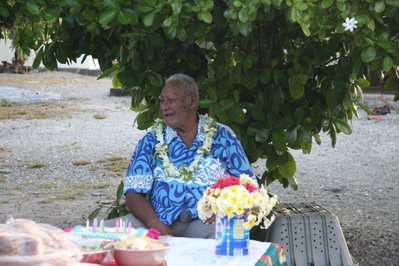

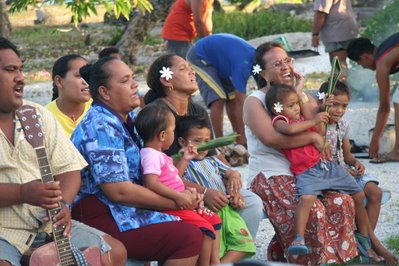
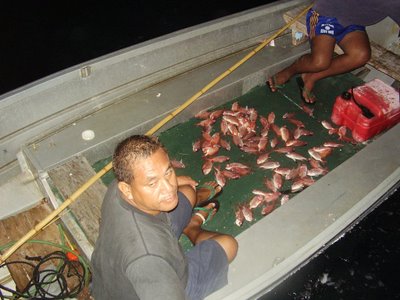
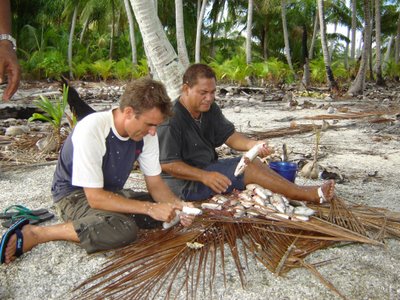
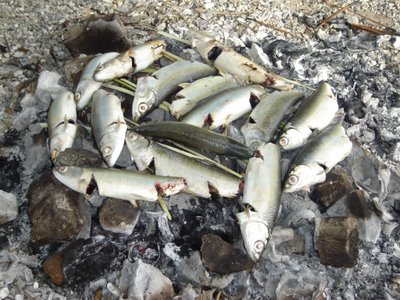


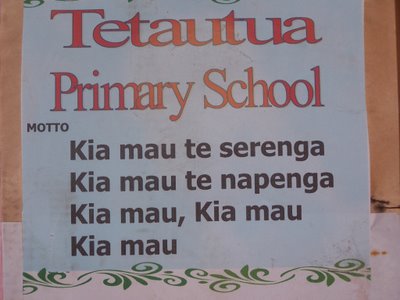

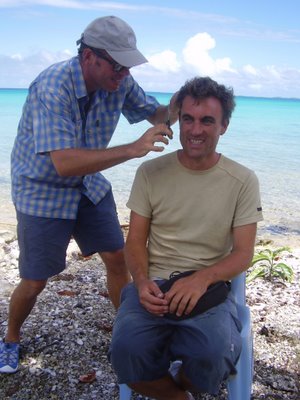

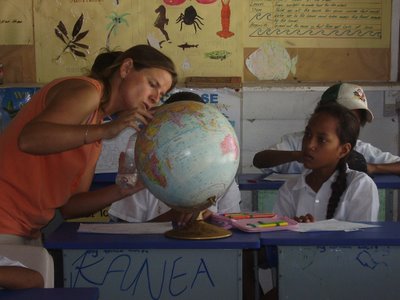
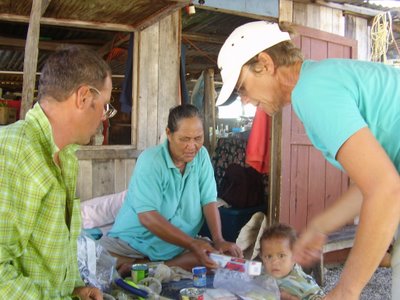
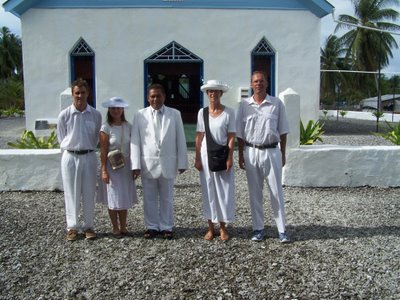
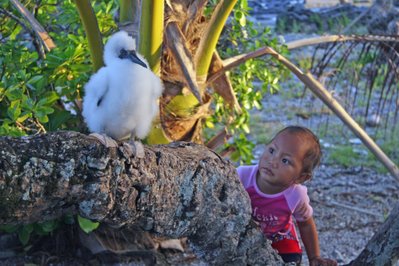

No comments:
Post a Comment